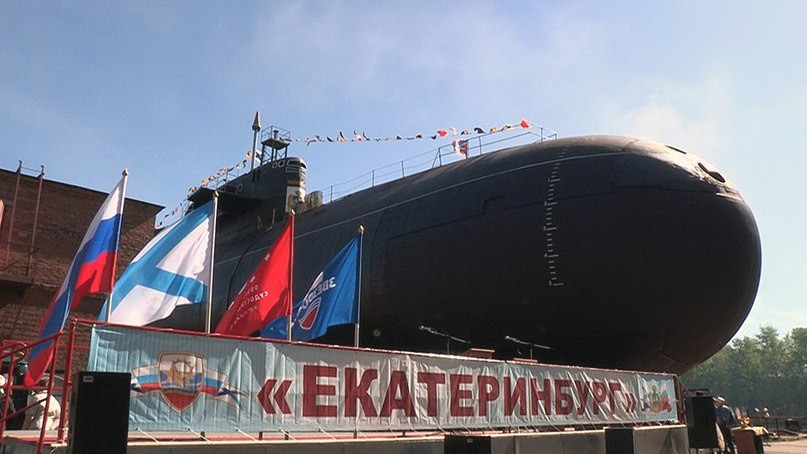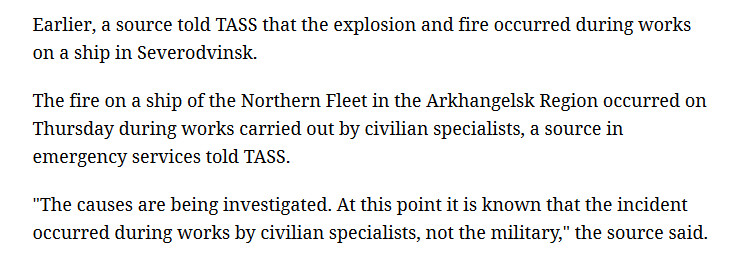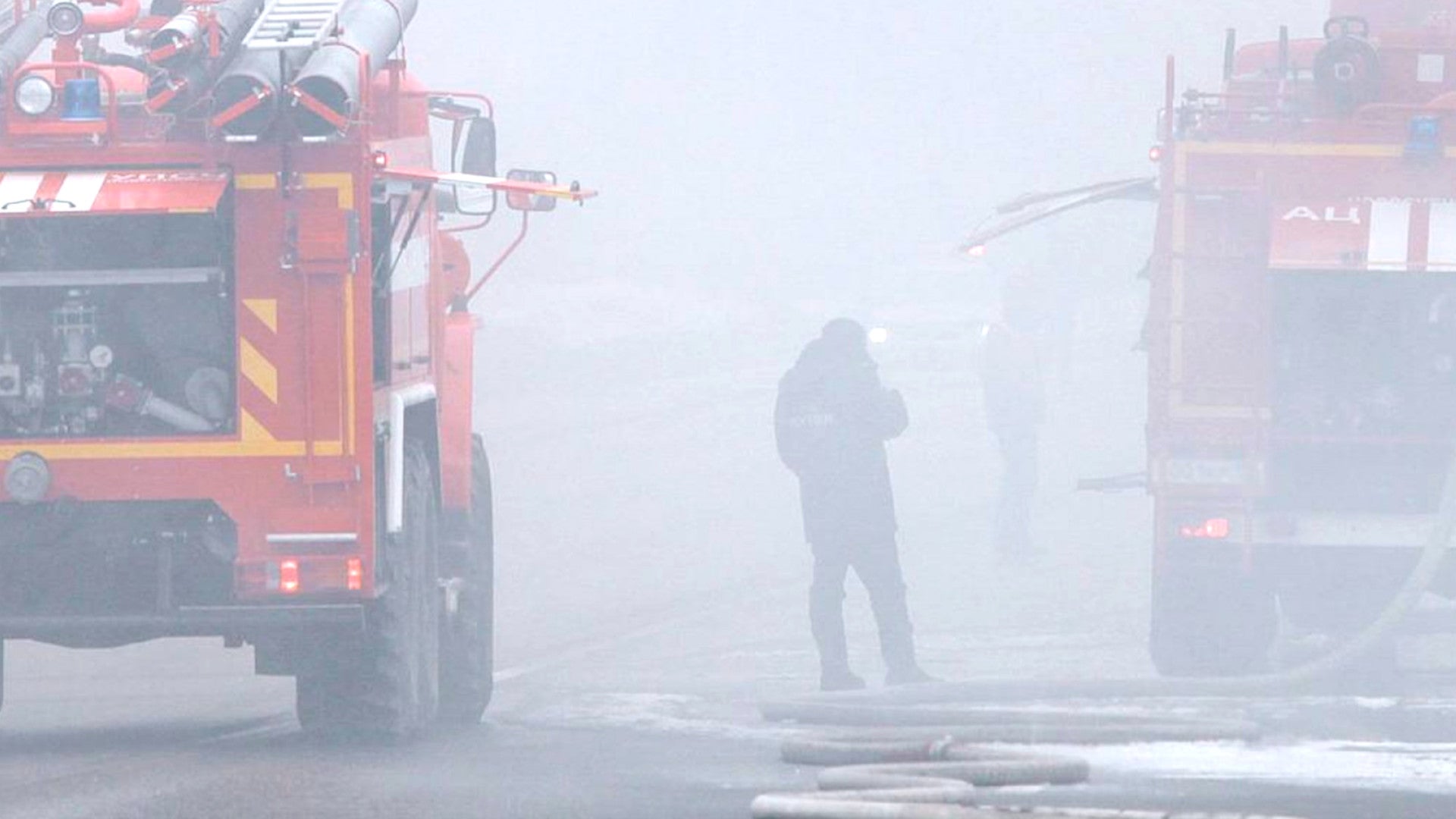The Russian Ministry of Defense has rejected reports of a brief spike in ambient radiation after an explosion and subsequent fire killed at least two individuals at a military test site near the White Sea. This incident follows a massive blast at an ammunition depot in Siberia and ensuring fires injured six people and forced thousands of others nearby to evacuate the area just days ago. It also comes a month after a fire broke out onboard the top-secret Russian spy submarine Losharik, killing 14 sailors.
This latest incident reportedly occurred at a site near the village of Nyonoksa in Russia’s northwestern Arkhangelsk region on Aug. 8, 2019, according to Russia’s Interfax. Russia’s Ministry of Defense said at least seven people had been injured in the accident, including a defense industry employee, and two of them had later died. Other reports say there may be as many as 15 people injured in total.
Beyond this, many of the details about the accident remain unclear. State-run media outlet TASS, citing anonymous sources, had initially reported that the explosion and fire had occurred on an unspecified ship from the Russian Navy’s Northern Fleet at its base in Severodvinsk, to the east of Nyonoksa. Other reports said that the incident might have involved a test ship or unpowered barge. The Russian Ministry of Defense’s statement does not specifically identify the location of the incident, describing it only as a “test site.”

TASS‘ English translation of the Russian Ministry of Defense statement also said that a “liquid propellant jet engine” exploding was the cause of the accident, while its Russian version uses a phrase that could also translate to “liquid propellant rocket engine.” Other Russian media outlets, include state-run RIA Novosti, have also described the item that blew up as a liquid fuel rocket motor.
The specific mention of a “liquid propellant” at all strongly points to a rocket motor given that jet engines almost universally use some form of liquid fuel and that this qualifier would be redundant in that case. There are, however, liquid and solid fuel rocket motors. Nyonoksa is reportedly used to test both cruise missiles, which use jet engines, and rocket-powered ballistic missiles.
If a liquid fuel rocket motor was the source of the explosion, it is possible that it occurred during a test or other work on an R-29RM Shtil submarine-launched ballistic missile, which the Russian Navy continues to deploy on its Project 667BDRM Delfin class ballistic missiles submarines. No report, so far, has identified the motor, or associated missile, in question.
Far more worrisome are reports from officials in Severodvinsk of an increase in ambient radiation after the accident. “A short-term rise in background radiation was recorded at 12 o’clock in Severodvinsk,” Ksenia Yudina, a spokesperson for the city, told reporters.
The Civil Protection Department in Severodvinsk said that the readings, which exceed the normal background level for the area of 0.11 millisieverts per hour, had come from two sensors tied to an automated system in the region.
Severodvinsk officials subsequently added that the radiation levels had already “normalized.” There were unconfirmed reports that residents in the area had received instructions to take precautions to prevent radiation exposure.
The Russian Defense Ministry subsequently denied those claims. “No harmful substances were emitted into the atmosphere, the background radiation is normal,” according to a statement.
What the exact source and veracity of the claims of increased radiation from Severodvinsk city officials might be, it is hard to hear about this incident and not think about a fire that occurred on board the Delfin-class submarine Ekaterinburg while it was in dry dock in 2011. Seven years later, then-Russian Deputy Prime Minister Dmitry Rogozin publicly disclosed that the boat had a full load of 16 R-29RMs, each one of which carries four nuclear warheads, while the work was going on, something that one could only describe as a gross safety hazard. Observers at the time of the incident had dismissed reports from anonymous sources that there were missiles on the submarine on the basis that it seemed extremely unlikely that Russians would have been so careless.

The Ekaterinburg incident is also interesting to note given the initial report from TASS that this latest accident had actually happened during work on an unspecified Russian naval vessel in Severodvinsk. At the time of writing, the Russian state media outlet had not updated its English-language story to specifically say that this was in error or retract the statement, as seen in the screenshot below, which The War Zone has preserved here for the record.

A separate report from Russian newspaper Lenta suggested that the accident could have actually been the result of a failed ballistic missile launch from a submarine in the White Sea. This was based solely on the Russian Ministry of Defense’s unexplained demand that local authorities in the Dvina Bay area in the aftermath of the incident.
Still, a failed launch from a submarine would hardly be unheard of. In September 1991, just months before the collapse of the Soviet Union, an R-39 Rif submarine-launched ballistic missile, thankfully with no live nuclear warheads inside, blew up inside its launch tube on the Typhoon class submarine TK-17 during a test. You can read more about that harrowing incident that almost led to the submarine sinking here.
It is also possible that TASS’ report of a “liquid propellant jet engine” is actually more accurate and the incident involved one of Russia’s sea-launched land attack or anti-ship cruise missiles, some of which can carry nuclear warheads. Damage to a nuclear submarine, or the nuclear-powered Kirov class battlecruiser Pyotr Velikiy, that may have carried out the failed launch could be the reason for a radiation leak. Russia is also reportedly working on a nuclear-powered and nuclear-armed cruise missile called Burevestnik.
This accident also comes more than a month after 14 sailors died while fighting a fire on Russia’s nuclear-powered Project 10831 spy submarine Losharik. A eulogy at a subsequent memorial service lauded the Russian Navy personnel for doing everything to “prevent a catastrophe of global proportions,” leading some to believe that there had been a more serious risk of radiation leaks from the boat’s nuclear reactor than the Russian government had admitted publicly.
It is, of course, entirely possible that the reported surge in radiation near Severodvinsk was a false positive of sorts and that the incident was more mundane. Beyond the Ekaterinburg incident, fires are hardly uncommon at Russian naval bases and shipyards. Just in 2018, fires sunk the Russian Navy’s largest floating dry dock, which had the aircraft carrier Admiral Kuznetsov
inside it at the time, damaged an icebreaker under construction in St. Petersburg, and caused damage to submarines in the country’s Far East.
In addition, the Russian military, as well as its defense industry, has a history of major accidents tied largely to lax safety protocols, in general. On Aug. 5, 2019, an ammunition depot in the country’s Siberia region exploded, injuring at least six people, sending artillery shells and other debris flying into nearby communities, and forcing thousands to evacuate. Aerial firefighting aircraft and helicopters, along with unmanned firefighting vehicles on the ground, helped finally contain the blaze, which burned for hours.
Back in April, a huge fire had also broken out at a large industrial park in Siberia. Some of the facilities at the Krasnoyarsk Machine-Building Plant are responsible for the production of components for intercontinental ballistic missiles, though Russian officials said the blaze was confined to a factory that builds consumer goods, including refrigerators.

So, regardless of the exact circumstances of this particular incident along the White Sea, it is certainly another embarrassing accident for Russia’s military and defense industrial sectors just this year.
We will continue to update this story as more information becomes available.
Update: 3:30pm EST—
Online tracking data shows that a nuclear fuel carrier ship was in the general area of the incident at the time. It is possible that the explosion in some way impacted that vessel, leading to a radiation leak.
Contact the author: joe@thedrive.com
